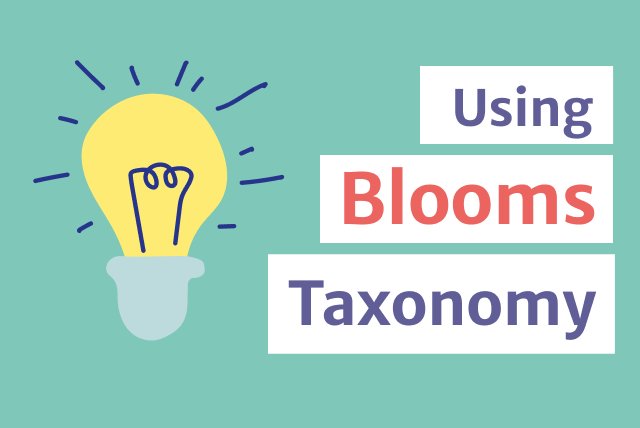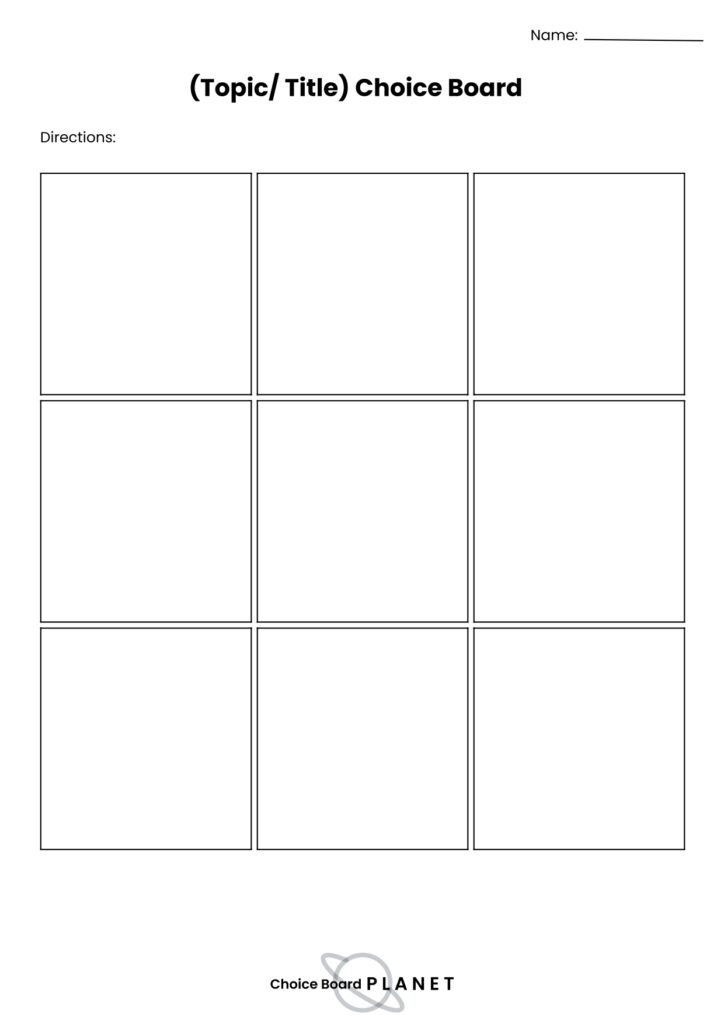Introduction
In today’s dynamic educational landscape, teachers are constantly exploring innovative methods to engage students and enhance their learning experiences. One powerful approach that has gained significant traction is the integration of Bloom’s Taxonomy into choice boards. Bloom’s Taxonomy provides a structured framework for developing a range of cognitive skills, and when coupled with choice boards, it creates a versatile and student-centered learning environment. In this blog, we will delve into the concept of choice boards, explore the different levels of Bloom’s Taxonomy, and discuss effective strategies to seamlessly incorporate them into classroom activities, promoting critical thinking, creativity, and active student participation.
Understanding Choice Boards
A choice board is a visual organizer that offers students a variety of learning activities based on their preferences. These boards consist of a grid with different options, each catering to diverse learning styles and levels of difficulty. By allowing students to choose activities aligned with their interests and abilities, choice boards promote autonomy, self-directed learning, and a sense of ownership over one’s education.

Decoding Bloom’s Taxonomy
Bloom’s Taxonomy, developed by Benjamin Bloom and his colleagues, categorizes cognitive skills into six levels: Remembering, Understanding, Applying, Analyzing, Evaluating, and Creating. These levels represent a continuum of complexity, with Remembering being the simplest and Creating being the most intricate. Integrating Bloom’s Taxonomy into choice boards enables educators to scaffold learning activities, ensuring that students progress through increasingly sophisticated cognitive processes.
Remembering: This level involves recalling facts and basic concepts. Activities at this level could include quizzes, flashcards, or summarizing information from a given text.
Understanding: Understanding goes beyond mere memorization. It involves grasping the meaning of information and explaining it in one’s own words. Activities may include concept mapping, explaining a process, or interpreting a diagram.
Applying: Applying knowledge means using learned concepts in new situations. Students might engage in activities such as solving real-life problems, conducting experiments, or creating models to demonstrate their understanding.
Analyzing: At this level, students break down complex information into parts and examine relationships between them. Analytical activities may include comparing and contrasting, identifying patterns, or conducting cause-and-effect analyses.
Evaluating: Evaluation involves making judgments based on criteria and standards. Activities could encompass critiquing arguments, defending positions, or conducting debates, encouraging students to weigh evidence and form reasoned opinions.
Creating: The highest level of Bloom’s Taxonomy, creating, involves synthesizing information and generating new ideas. Students may engage in activities like designing experiments, composing original stories, or developing innovative solutions to real-world problems.
Incorporating Bloom’s Taxonomy into Choice Boards
Designing Varied Activities: When creating choice boards, incorporate activities from different levels of Bloom’s Taxonomy. Ensure that each row or column represents a different cognitive level, providing students with a diverse range of options to choose from.
Clear Instructions: Provide clear instructions for each activity, specifying the expected outcomes and assessment criteria. Clear guidelines help students understand the task and focus on the intended learning objectives.
Encouraging Depth and Complexity: Encourage students to delve deeper into a topic by completing activities at higher levels of Bloom’s Taxonomy. For instance, if a student begins with a basic “Remembering” activity, they can progress to an “Analyzing” or “Creating” activity related to the same concept.
Promoting Collaboration: Some choice board activities can be designed to encourage collaboration and peer interaction. Group discussions, debates, or collaborative projects promote not only higher-order thinking but also teamwork and communication skills.
Personalization and Differentiation: Choice boards allow for personalization and differentiation in the classroom. Students with different learning styles and abilities can select activities that cater to their strengths and areas for growth, fostering an inclusive learning environment.
Regular Reflection: Incorporate reflection exercises into the choice board activities. After completing a task, encourage students to reflect on what they learned, how it challenged them, and how they can apply this knowledge in the future. Reflection enhances metacognitive skills and promotes a deeper understanding of the content.

Benefits of Incorporating Bloom’s Taxonomy into Choice Boards
Critical Thinking Development: By engaging in activities across various levels of Bloom’s Taxonomy, students develop critical thinking skills. They learn to analyze, evaluate, and synthesize information, preparing them for complex problem-solving tasks in the future.
Increased Engagement: Choice boards empower students by giving them a say in their learning path. When students have the freedom to choose activities that align with their interests, they are more likely to be engaged and motivated to participate actively in the learning process.
Holistic Skill Development: Bloom’s Taxonomy covers a wide spectrum of cognitive skills, but it also integrates other essential skills such as communication, collaboration, and creativity. By incorporating these skills into choice board activities, students receive a holistic education that prepares them for success in diverse fields.
Preparation for Real-World Challenges: Many real-world challenges require individuals to analyze information critically, make informed decisions, and create innovative solutions. By practicing these skills through choice board activities, students are better prepared to face the complexities of the modern world.
Promoting Lifelong Learning: By fostering self-directed learning and curiosity, choice boards equipped with Bloom’s Taxonomy activities instill a love for learning. Students recognize the value of continuous education and become lifelong learners, continuously seeking knowledge and exploring new ideas.
Conclusion
Incorporating Bloom’s Taxonomy into choice boards revolutionizes the classroom experience. It empowers students, encourages critical thinking, and nurtures a passion for learning. As educators, embracing this approach not only enriches the educational journey of our students but also equips them with the skills and mindset necessary for success in an ever-evolving world. By harnessing the synergy between Bloom’s Taxonomy and choice boards, we pave the way for a brighter and more intellectually stimulating future for the next generation.


